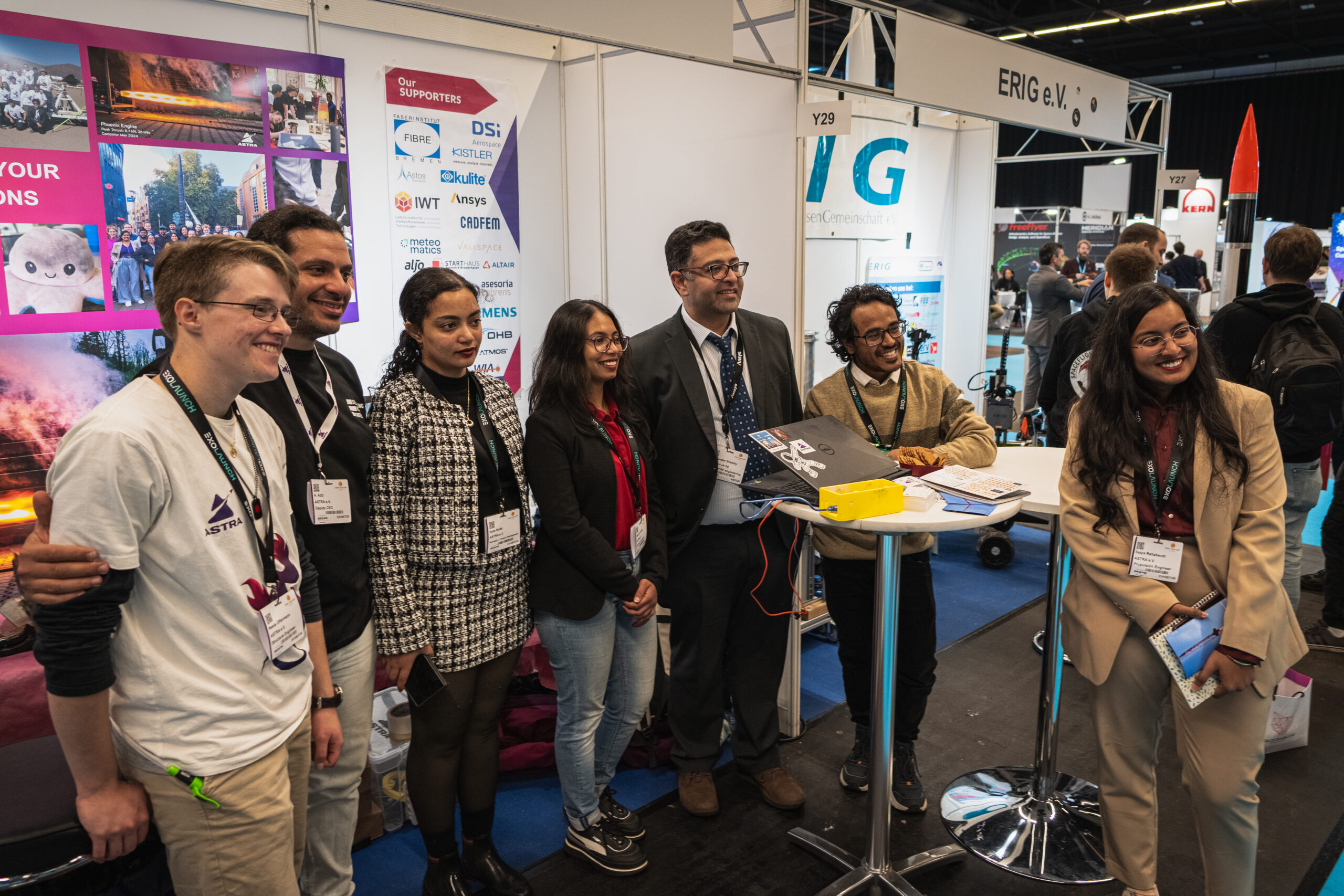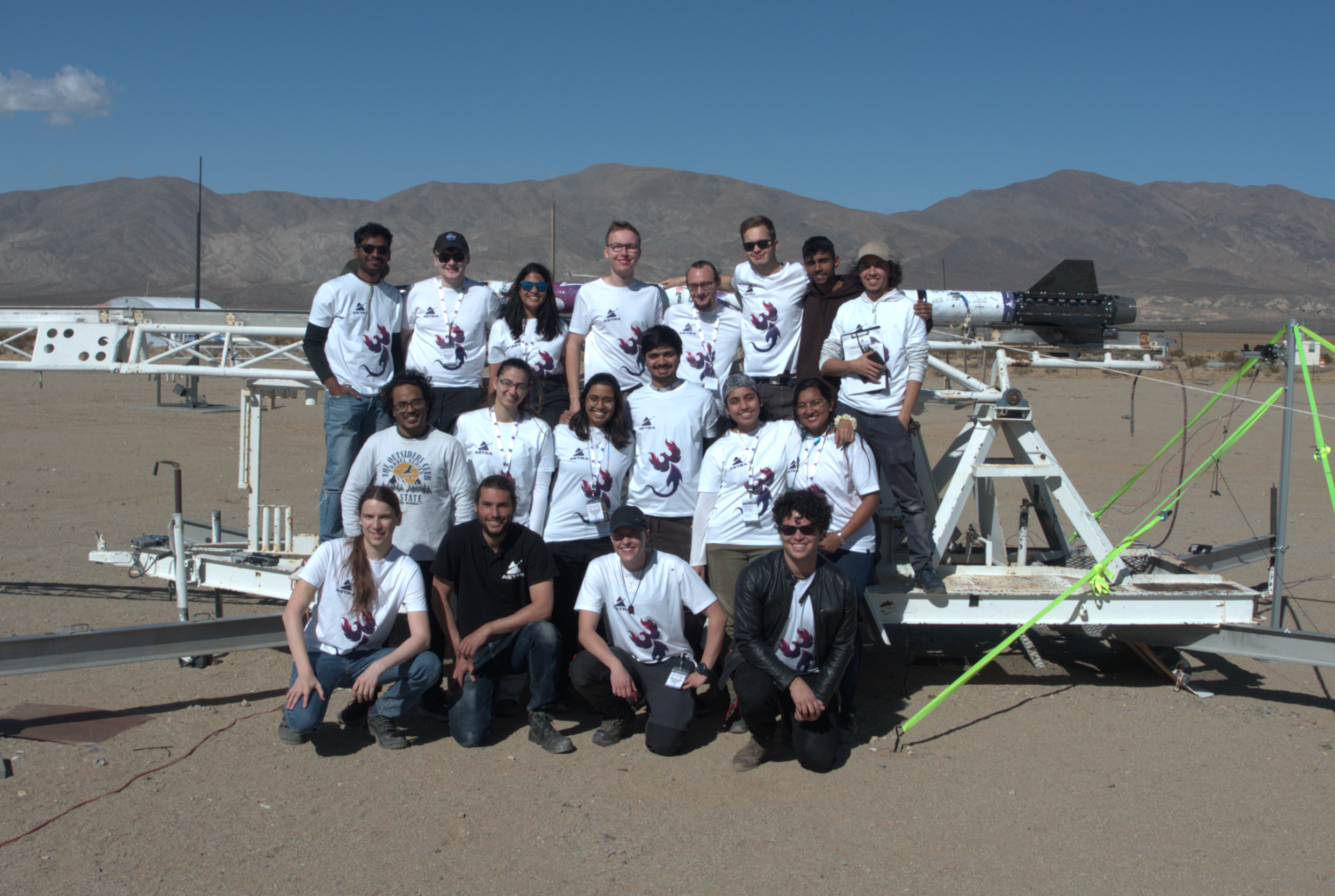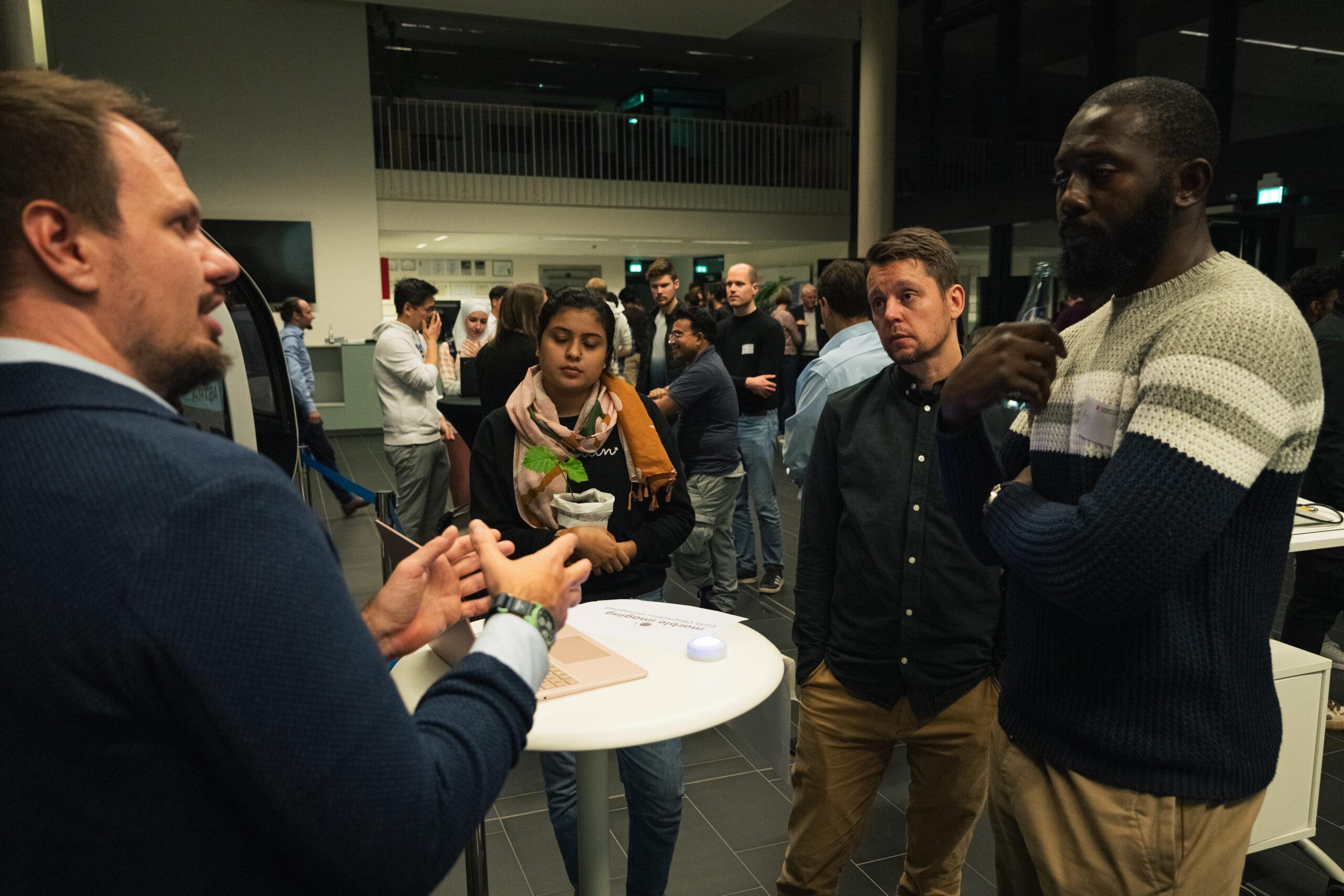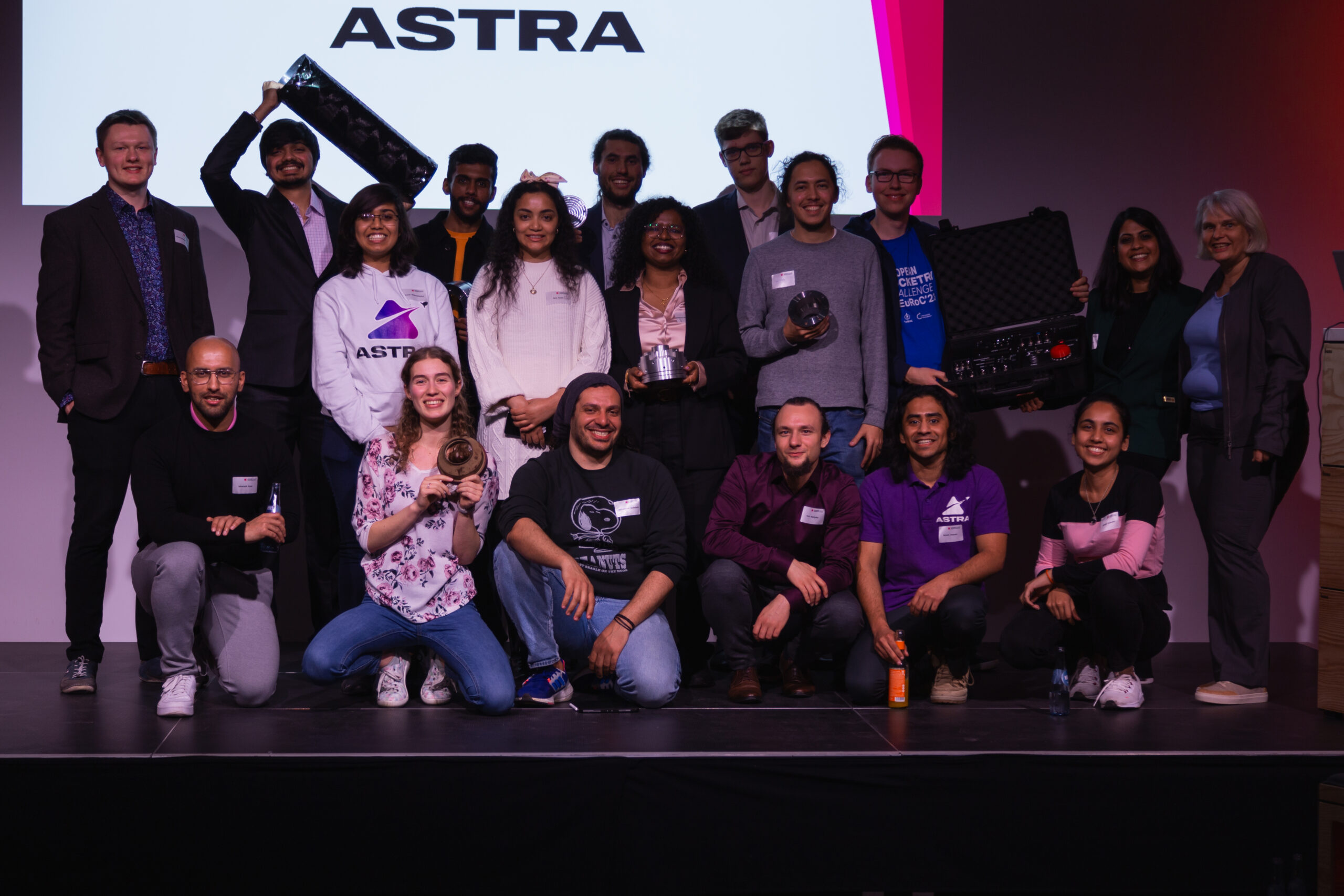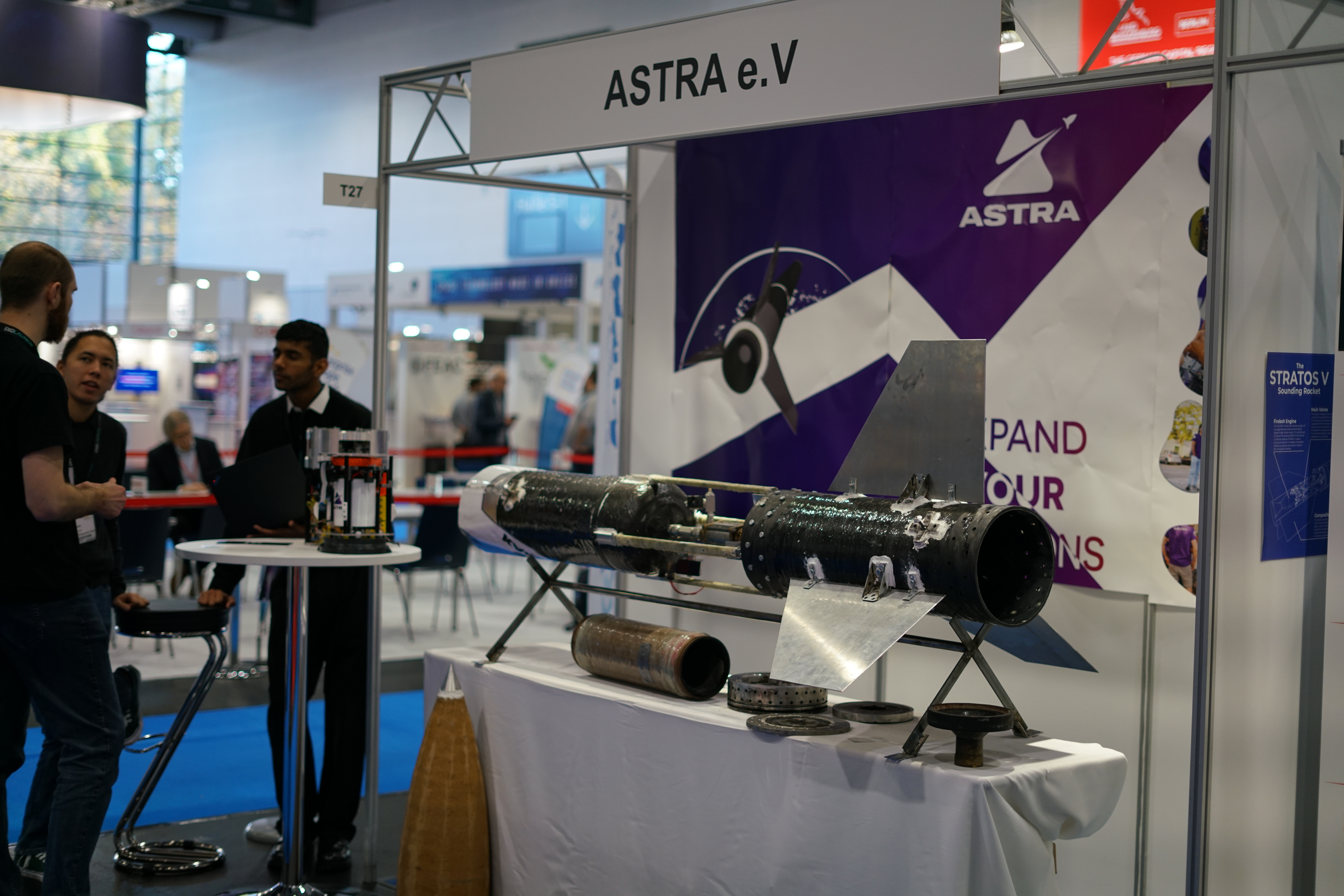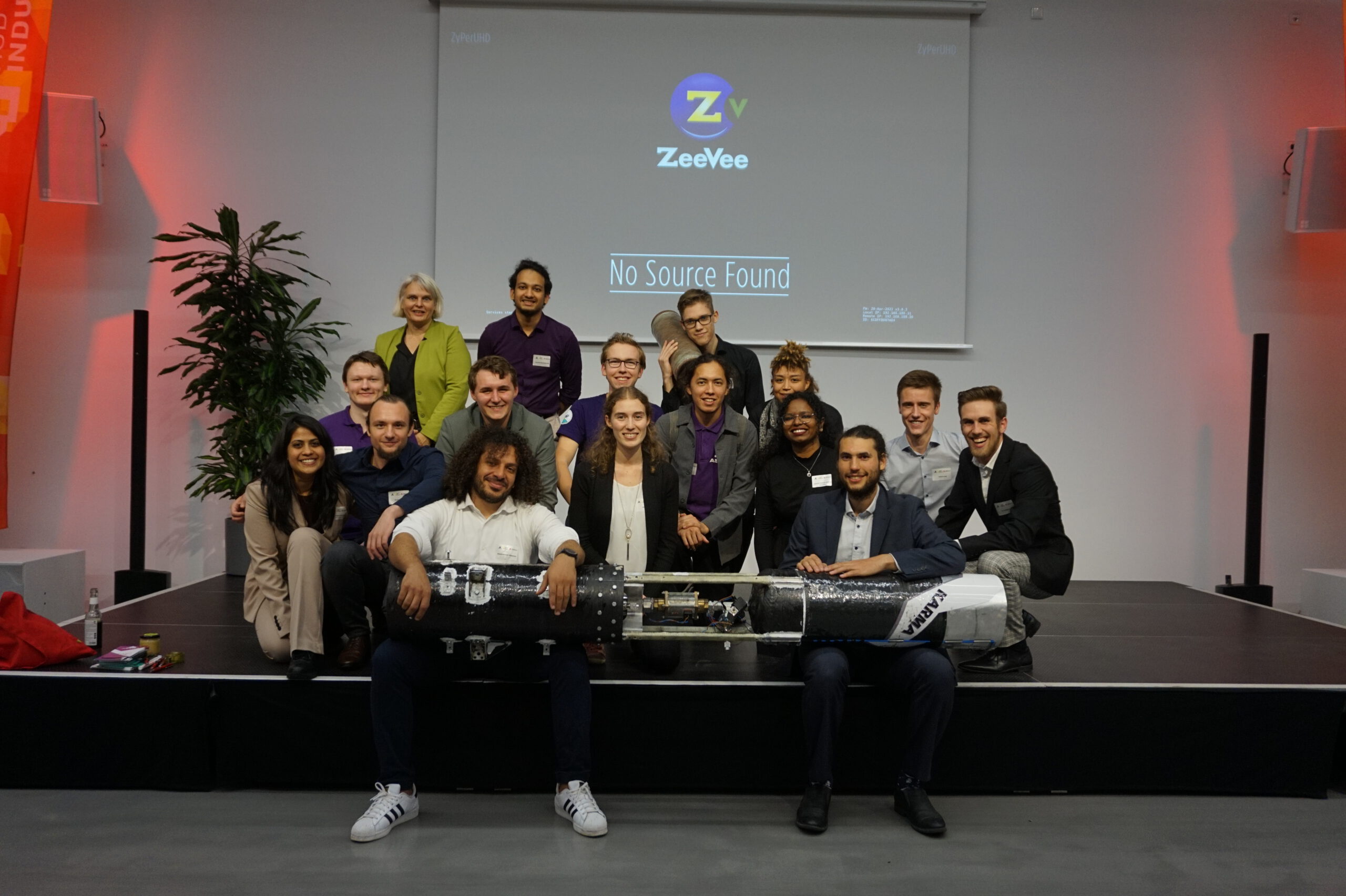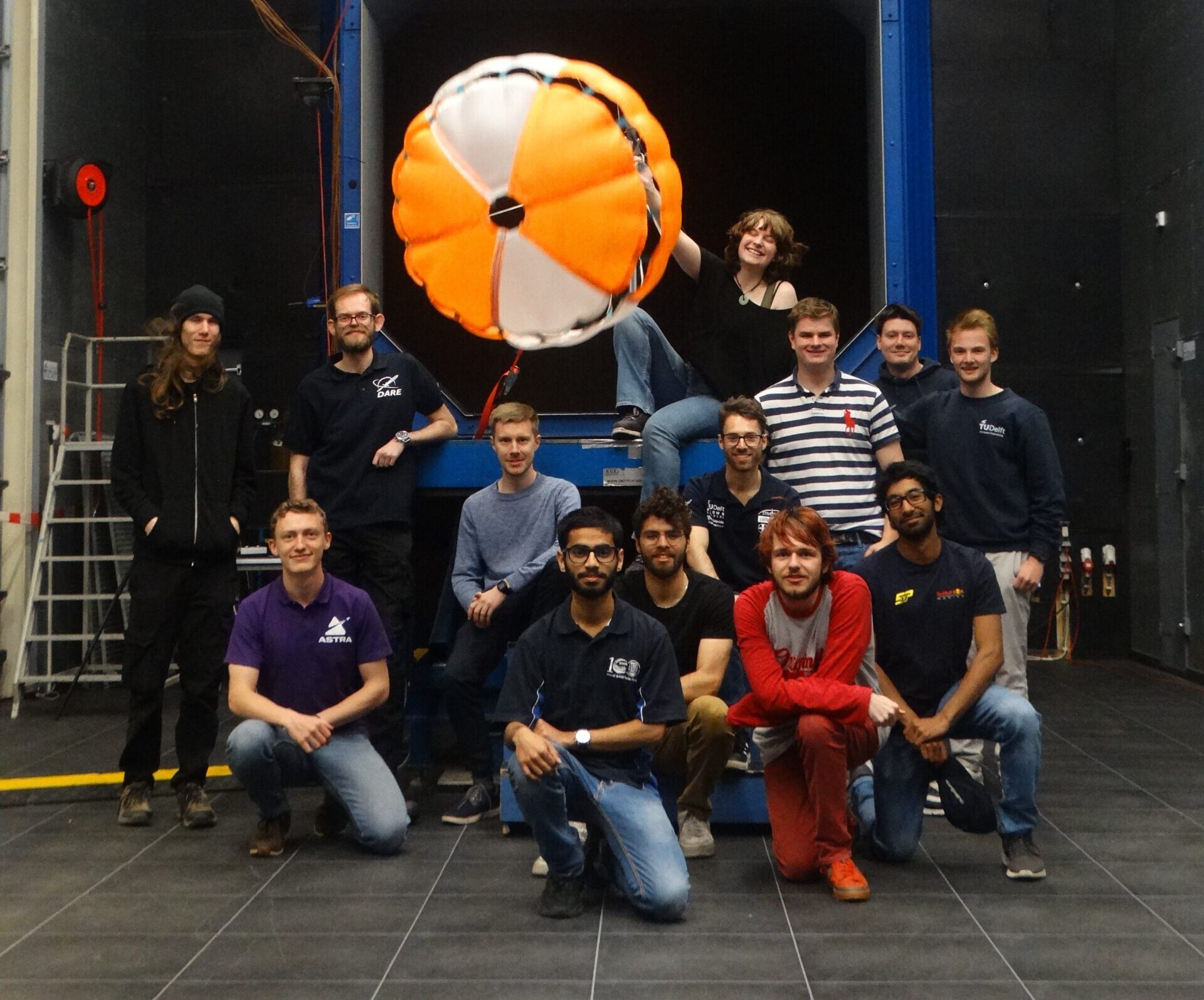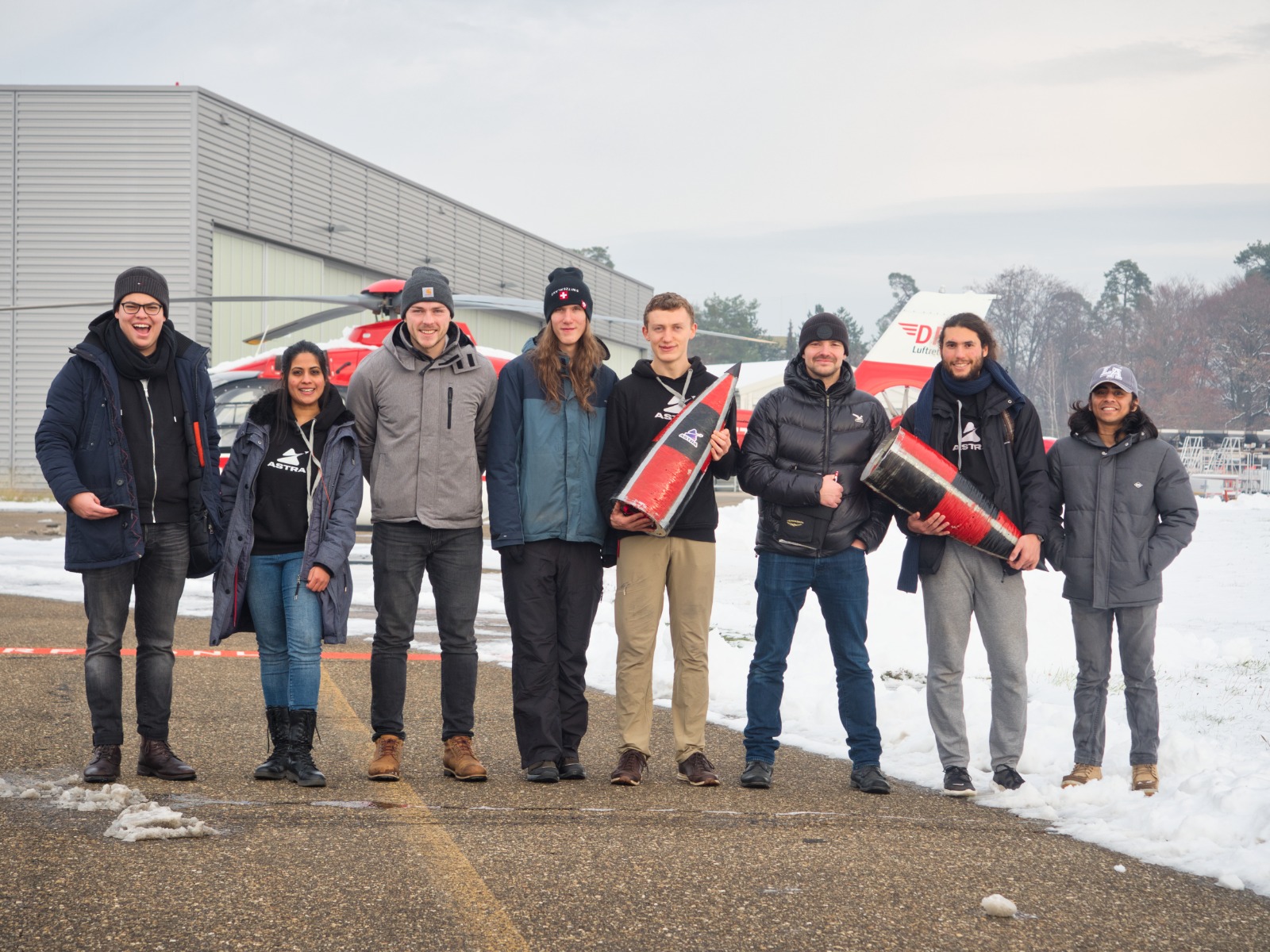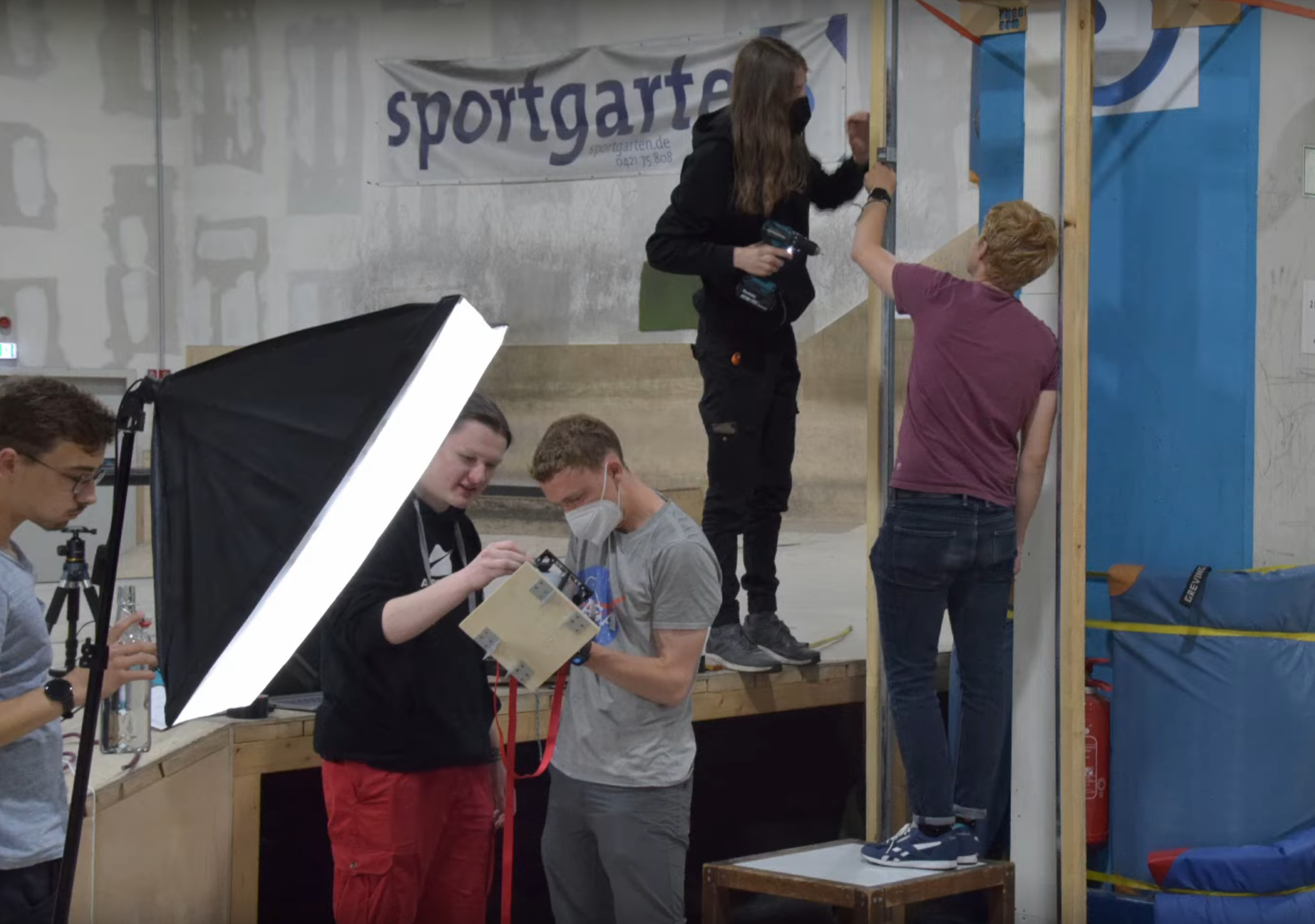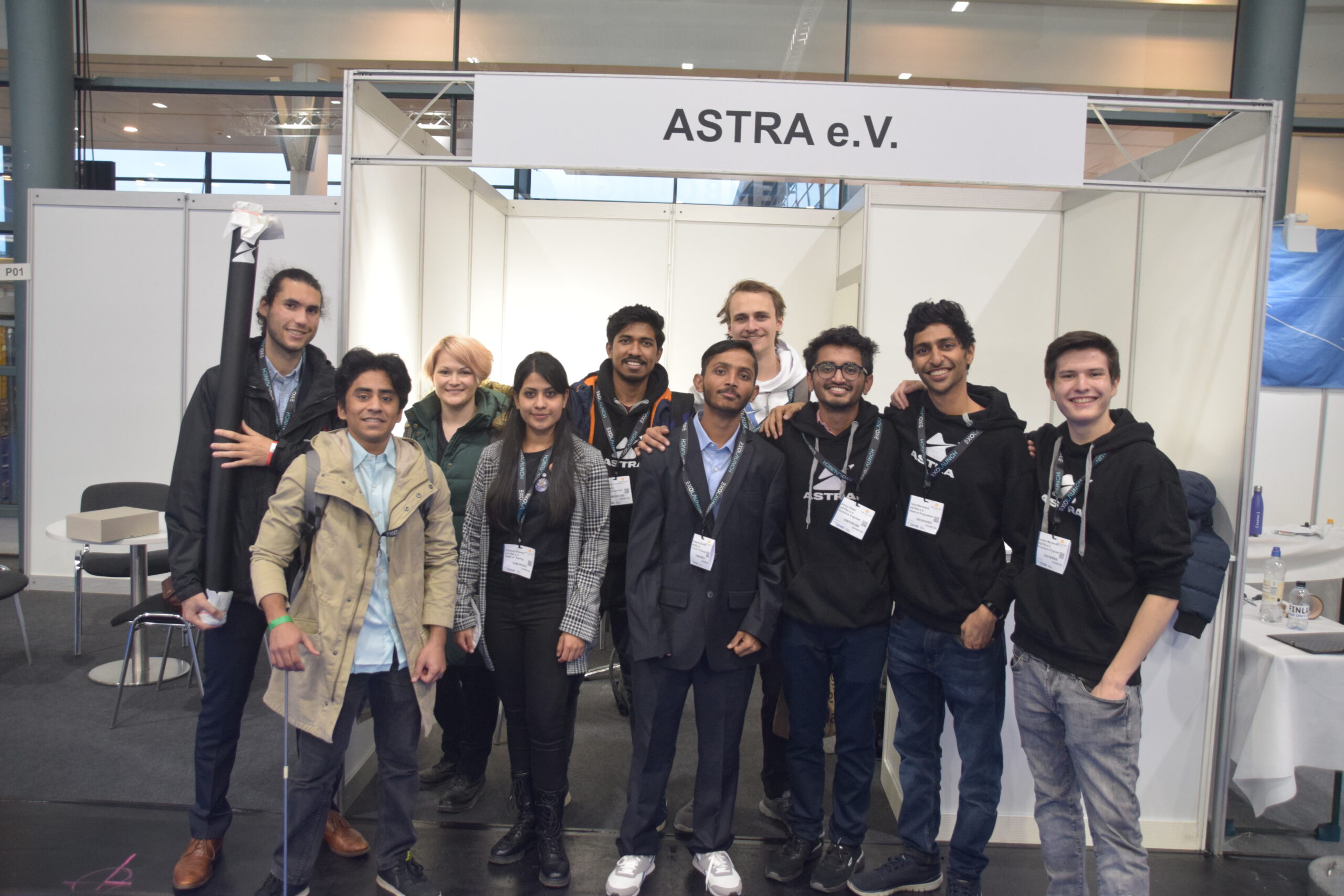Our association was founded in 2021. It started out as just an idea in the minds of our founders, but quickly developed into a permanent association with dozens of members all acting in concert. But as you can see below, it took a while to get there.
Only two weeks after our launch, we were once again at the Space Tech Expo in Bremen to connect with other student groups, space companies and other professionals. We always enjoy being a part of this big opportunity where space enthusiasts and knowledge are brought all together.
WE DID OUR FIRST SUCCESSFUL LAUNCH! We finalized project Phoenix and launched it at FAR in California, USA. We reached an altitude of 1.5 km and a maximum thrust of 3.5 kN. Due to problems with shipping of a box containing the ground system and rocket fins, we weren’t able to conduct the launch as planned. Nevertheless, we were very happy and proud of seeing Phoenix fly.
Together with the Starthaus Bremen & Bremerhaven, we organized our fourth Networking Event. The more we are getting into the space community in Bremen, the more we learn how important it is to connect various professional backgrounds and include different perspectives for successful teamwork. That’s why we decided to make this our event topic: What kind of interfaces are needed and present in the aerospace industry?
Coming closer to our first launch, we needed to bring all our subsystems together and integrate the parts into one big rocket. After some runs, we decided to hold one of our assemblies as a public event. This allowed us to get in touch with the “Bremer” community, showcase and explain our work, and inspire others with the fascination of space.
As we continued building and testing, we held our Critical Design Review for Phoenix. Each subsystem had its own session, and during a long week of many meetings, we discussed everything in detail. We were very happy to welcome some technical experts from different backgrounds who supported our CDR with their expertise and knowledge.
For Project Phoenix, we conducted a hotfire test for our propulsion system. It was already our third time at the test site in Lampoldshausen. Our team had established a routine and was therefore able to perform seven tests in four days. All in all, the tests were very successful. We achieved a peak thrust of over 8 kN and met all our system requirements.
As an educational association, we always strive to enable students to learn and gain experience in a variety of fields. Therefore, it is really important to know and understand what kind of competencies we want to promote and how we can achieve that. To discuss this topic further, we held our third Networking Event in cooperation with Starthaus Bremen & Bremerhaven on the topic: How to boost space competencies.
In the lead-up to the launch of Phoenix, it is important to verify that the parachutes are capable of handling the immense loads of descending and slowing the rocket on the way back to the ground. To ensure this, we went to the wind tunnel in Delft and conducted a test of our Recovery System. There, we tested both of our parachutes: the drogue parachute at 25 m/s and the main parachute at 15 m/s. Our system worked - both parachutes inflated successfully and can handle the wind speeds.
This time at the Space Tech Expo, we will display our fully assembled rocket. Although it didn't launch, it makes an excellent showpiece which we're able to use to explain the progress we've made this year and what we're working on for the future. Of course, we also take the opportunity to network with industry partners and present our work to the mayor of Bremen!
The key to staying in people's minds is regularly reminding them of our work. So in October, we are organizing our second networking event in collaboration with DHI and Starthaus. This time the topic will be sustainability in the aerospace sector. We are discussing the subject with key people from academia and industry, and once again we are bringing the space community in Bremen together to discuss an important issue.
The time has come: EuRoC 2023 is our first real opportunity to see our Karma rocket take off. Unfortunately, due to the limited time we've had over the past few weeks, the rocket still has a few problems that we can't fix on-site. Due to this and some unexpected concerns of the EuRoC supervisors, we don't get the launch permission. But that's by no means the end: We learned a lot and will try to do better next time!
At EuRoC, the success of our project heavily relies on the performance of our rocket motor. To ensure that it meets our expectations, a team of our most dedicated members was sent to Lampoldshausen to conduct a series of tests on the motor. The main objective of these tests is to achieve a 10-second burn that generates the required thrust for lift-off.
In the meantime, we have made great progress in construction. Our parachute was largely completed and could be tested. This is done with a wind tunnel test. Thereby the parachute is - simplified - put into a tunnel with 3m diameter and tested with very strong simulated wind if everything is good.
We wanted to create more opportunities for exchange on aerospace topics. A place was needed where science, business and students could meet and talk to each other. Together with the Starthause Bremen & Bremerhaven and the DHI (Digital Hub Industry), we organized an event on the topic of "New Space".
You can read more about it in this post:
Successful start – three Bremen initiatives create meeting space for space enthusiasts
The drop test checks whether the parachute container and mechanism work and whether the parachutes unfold appropriately at the correct height. For this purpose, the nose cone is dropped from an aircraft at a height of about 600 meters. Our drogue parachute unfolded without any problems. The main parachute was ejected, but unfortunately got tangled in the strings and did not deploy properly. We are working on a better folding system. You can watch the drop test here:
Then in November, we were excited to be at Space Tech Expo again. We were able to show our progress and at the same time get a lot of inspiration and ideas again. The Expo also offers many opportunities to network and engage in conversation with people.
Planning and calculating was a lot of fun for us. Nevertheless, it is clear - we are here mainly to build. In phase B, we were finally able to start building the rocket. Materials were ordered, calculations readjusted, designs changed again and again. We learned how to handle fiberglass, how to fold parachutes, and how to incorporate weather data into control systems.
We then sent all drafts and plans to DLR for several reviews. In the process, each technical team writes its own report. DLR then reviews them and makes comments or suggestions for improvement.
When this process was complete, we were able to start Phase B.
All constructing projects can be divided into different phases. Regardless of what you build later, all ideas probably start the same way: with planning. In Phase A of our project, we designed the structure of the rocket, calculated dimensions and looked for suitable materials. The entire concept of the rocket had to be defined and checked before we could start building it.
In order to really work purposefully on rocket construction, it makes sense in Germany to found a non-profit association. This gives us legal security, the possibility for financing and sponsoring and makes our idea more tangible.
A lot of paperwork was necessary for this step. But in December it was official - ASTRA is an association.
As a small team, we needed lots of ideas, help and enthusiastic students in the aerospace field. We found all that at the Space Tech Expo. We had the opportunity to talk to many companies and engineers in the aerospace industry. At the same time, we were able to introduce ourselves for the first time and present our vision.
The original idea of ASTRA e.V. came from a student of our team. He was studying for a master's degree in space engineering and missed the practical relevance. So he founded a group to build a rocket. To make this interesting for space enthusiasts, he decided that the rocket should reach the Karman line (100 km above sea level).
